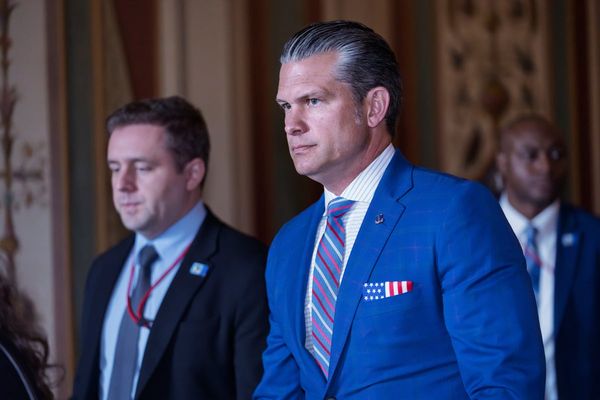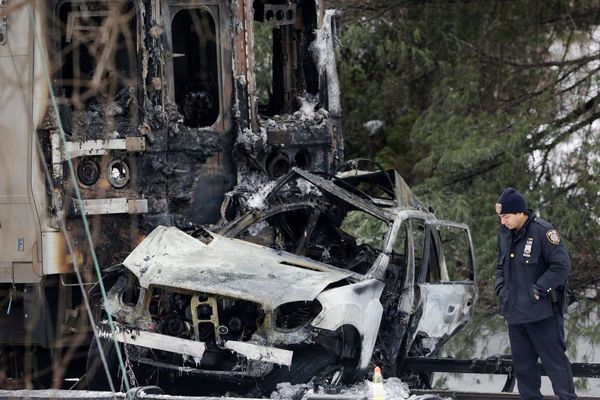
In 2022, Taiwan was subjected to several drone incursions and cyber attacks originating from China, urging Taiwanese leadership to rethink its national security policies to deter the People’s Liberation Army (PLA)’s aggressions on the peripheries and a potential full-scale invasion.
In response to U.S. House of Representatives Speaker Nancy Pelosi’s visit to Taiwan, China launched a series of cyber attacks on Taiwan’s government websites and databases. Taiwan reported that the attacks could be traced back to China and Russia. As part of their military exercises in the Taiwan Strait, China deployed over 100 planes as well as more than 10 warships in Taiwan’s vicinity following Pelosi’s visit.
Among the many national security measures being implemented by Taiwan’s government is the amendment to its rules on compulsory military service for citizens. On December 27, 2022, President Tsai Ing-wen reinstated the one-year mandatory conscription policy. While President Tsai is aware that extending conscription is challenging for both the government and the civilian population, she also stresses its necessity to Taiwan’s Overall Defense Concept.
Military modernization
China’s aggressive tactics coupled with its advanced and evidently larger military capabilities have forced Taiwan to reassess its military capabilities. To strengthen its national security, Taiwan proposed in August last year a staggering increase of its military spending for 2023. The government plans to spend US$19 billion on defense in 2023, which is a 15% increase from 2022. According to Statistics Department Minister Chu Tzer-ming, the majority of the funds will be allocated for operational expenses such as fuel and maintenance for aircrafts and ships, with funds set aside for foreign military procurement from the United States.
More recently, Taiwan has announced its plans to change the system for recruiting and training military conscripts starting in 2023 to improve Taiwan’s combat readiness. Under the “Strengthening the National Defense Force Structure Adjustment Plan,” compulsory military service will be extended from four months to one year starting on January 1, 2024. The salary of military conscripts will be increased from NT$6,510 (approximately US$212) to NT$20,320 (approximately US$664.56), on par with the level of the minimum wage. The new policy will affect conscripts born January 1, 2005 and after.
In her speech, President Tsai said that the decision to change its conscription system was inspired by Ukraine’s mobilization of its reserve force, which warded off Russian forces effectively from advancing deep into Ukraine and taking Kyiv. The success of Ukraine’s reserve force has encouraged Taiwan to be more open to lengthening the period for its mandatory military service.
“Taiwan must strengthen its self-defense capabilities in order to better ensure national security and interests,” President Tsai said, adding that the more prepared and more united the Taiwanese people are, the stronger and safer Taiwan will be. At present, Taiwan has around 169,000 active military personnel and around 1,660,000 reservists.
From 1949 to the end of the 20th century, Taiwan’s compulsory military conscription system required all Taiwanese men aged 18 years and above to serve two to three years in the military. In 2008, the length of the service period was scaled back to one year. The Kuomintang administration under President Ma Ying-jeou, which governed Taiwan from 2008 to 2016, further reduced the military training period to four months in 2013, relegating conscripts to supporting roles.

Conscription in 2024
In addition to extending the military training period, the new conscription policy also overhauls Taiwan’s military force structure. Forces will be divided into four blocks: the Main Battle Force, the Garrison Force, the Civil Defense System, and the Backup System.
The Main Battle Force will be composed of 210,000 military personnel and 180,000 volunteers. Members of this group are expected to undergo elite professional training in military combat and will be on the frontline of Taiwan’s defense. The Garrison Force will mostly consist of conscripts and will be responsible for homeland defense and infrastructure protection. They will provide support to the Main Battle Force while also assisting in civil defense work. The Civil Defense System, comprising national agencies, local governments, and replacement offices, will be primarily involved in disaster relief, providing medical treatment and securing public order, and undertaking repairs of facilities to ensure continuous operations in the midst of an attack. With the Backup System, the government will organize a reserve troop that will be mobilized during wartime to support the Main Battle Force and Garrison Force.
This force structure established a clear division of tasks. Considering the varying level of difficulty of each block’s assignment, they will undergo different training programs to ensure that they will receive appropriate training that is more specialized and efficient. These training programs will emulate modern training methods employed by countries with advanced militaries, which complements the training of Taiwanese non-commissioned officers in the United States. The modules are expected to include training on the operation of advanced weapons, actual combat training, live ammunition shooting, joint exercise, and civil defense.
With the U.S. 2023 National Defense Authorization Act (NDAA) signed into law, Taiwan is expected to receive new and more advanced U.S. defense systems and technology like Stinger and Javelin anti-tank missiles. To effectively incorporate them into the existing arsenal, it is crucial that Taiwanese conscripts receive specialized training on the use and maintenance of these systems. However, specific details of a joint military exercise between the U.S. and Taiwan was not mentioned in the 2023 NDAA. Experts suggest that Taiwan may participate in multinational naval drills with the U.S. or participate in the U.S.-led Rim of the Pacific Exercise. It is further suggested that both the U.S. and Taiwan may also be cautious of triggering an adverse response from China, therefore pursuing more small-scale joint exercises and the training of Taiwanese officers.
Challenges to the current conscription model
Taiwan’s military force has long been criticized for being inadequately prepared for combat. Newer conscripts have been described as “strawberry soldiers” for being pampered, privileged, and incapable of defending Taiwan. Over the years, civilians have expressed a lack of confidence in the quality of military training with stories of conscripts receiving little firearms training and instead being made to perform menial tasks such as mopping floors and cleaning toilets. With an ill-equipped military, implementing the new program could prove to be challenging. In an interview with NPR, Paul Huang, research fellow at the Taiwanese Public Opinion Foundation, said that the training program was “wholly inadequate” to prepare servicemen for modern and traditional warfare. He was enlisted for military service in 2011.
While further details about the new military training system are yet to be released, a review of Taiwan’s military force and training suggests that the Taiwanese government should go beyond merely extending its period of conscription. Since the new training program will follow training modules designed and used by the U.S. military, it is also reasonable for Taiwan to enter into mutual defense and security initiatives with the United States. Assistance can take the form of visits from bilateral exchanges, joint air and sea patrols along the Taiwan Strait, sending increasingly sophisticated defense systems to Taiwan, and even forming an advisory committee similar to or designed after the Military Assistance Advisory Group, which provided U.S. arms, military advice, and assistance in military training to Taiwan from 1951 to 1978.
Resurrecting the one-year military service has been long anticipated, but it is only the first step. With only a year to prepare for its implementation on January 1, 2024, Taiwan needs to overhaul its current training methods in accordance with the Overall Defense Concept to make the most out of the reform. In doing so, Taiwan will need to balance defense necessities with the priorities of its people by designing a training program that teaches both defense and practical skills. If there’s one important lesson that Taiwan’s military force should take from the Russian invasion of Ukraine, it is that the people’s collective will to defend Taiwan is crucial to succeed in deterring China.
READ NEXT: Overall Defense Concept Reshapes Taiwan’s Views on Defense Against China
TNL Editor: Bryan Chou (@thenewslensintl)
If you enjoyed this article and want to receive more story updates in your news feed, please be sure to follow our Facebook.







